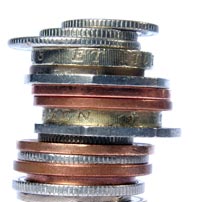Marketing Guides
Campaigns & Execution
How to Calculate Your Max Bid Price
 Have you (or someone you know) spent a bundle on a pay-per-click campaign with negligible results? Or are you shying away from paid search because you’ve heard that it’s expensive and difficult to manage?
Have you (or someone you know) spent a bundle on a pay-per-click campaign with negligible results? Or are you shying away from paid search because you’ve heard that it’s expensive and difficult to manage?
(If you’re new to paid search, here’s a quick intro.)
In any PPC campaign, it’s important to watch your bids and conversion rates so you can generate a positive return. Without a careful eye and calculator, it’s possible for spending to spin out of control.
One of the first keys to success is this: Know how much you can truly afford to spend on a click, and understand how to calculate your max bid price. With a real number to work with, you can be confident that you won’t overspend or lose money in your campaign.
Here are some formulas to get you started.
1. Calculate your Customer Lifetime Value (CLV) – the amount of profit an average customer will deliver to your company over a “lifetime” in today’s dollars. (You can find a straightforward CLV calculation here.)
| Enter your CLV here | A |
2. Use conversion rates to figure out what a click is worth to your company.
| What percent of your “qualified prospects” (however you define the term) become customers?* | B |
*If you don’t know, create an estimate. First, list each specific step that a qualified prospect goes through from the time she clicks to the time she buys. Then go back and estimate the conversion rate from each step to the next – of the prospects at step 2, what % will move to step 3? Finally, multiply all of the conversion rates together to get your overall conversion rate.
| Of the people who click your ad, what % do you think will become “qualified prospects”? | C |
C is your big variable – it’s affected by things like your ability to target your prospects with your ad and the sales skills of your landing page. For example, if you write a very generic ad, you’ll generate a lot of unqualified clicks. Or your landing page may not do a great job of converting clicks into prospects. Focus on improving this conversion rate as you launch & manage your campaign.
| Multiply B * C: This figure is your conversion rate from click-through to customer | D | |
| Multiply D * A: Here’s what a customer is worth at the click-through stage | E |
With this calculation you have an initial ceiling. But you should also pull out an expected return on your investment (ROI) so you can make sure your campaign is profitable.
| Desired ROI on a campaign (enter as a decimal) | F | |
| Additional sales & marketing costs you will incur to convert an average lead to a sale | G | |
| Final Max Bid Price: (E-G)/(F+1) |
Now when the search platform asks you to enter a maximum bid price, you know how high you can go (although you should start lower and work up to your mas as needed). Then keep an eye on your conversion rates and focus on continuous improvement.
Confused? Need a spreadsheet with formulas ready to go? Download them in our SEO and SEM subject in our marketing planning app.
SEO AND SEM TEMPLATES / MARKETING PLANS / PROJECT MANAGEMENT
EVERYTHING YOU NEED FOR YOUR SEO AND SEM PROJECT